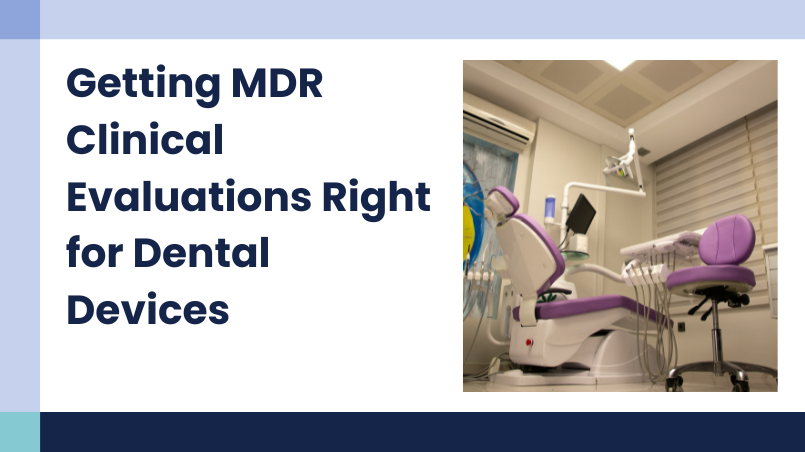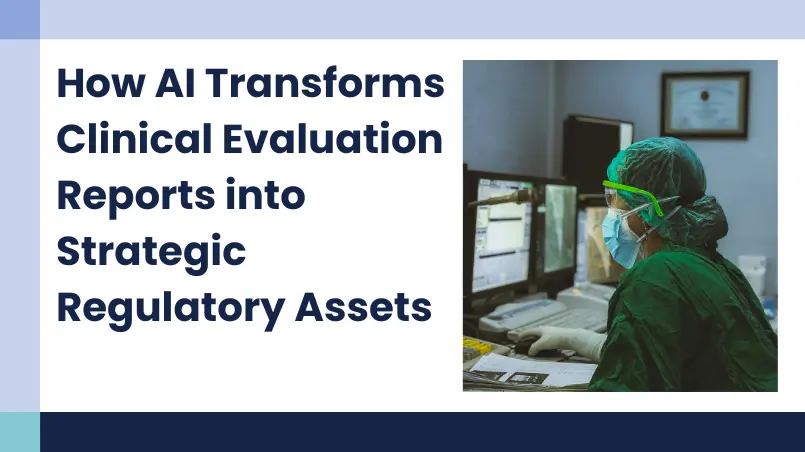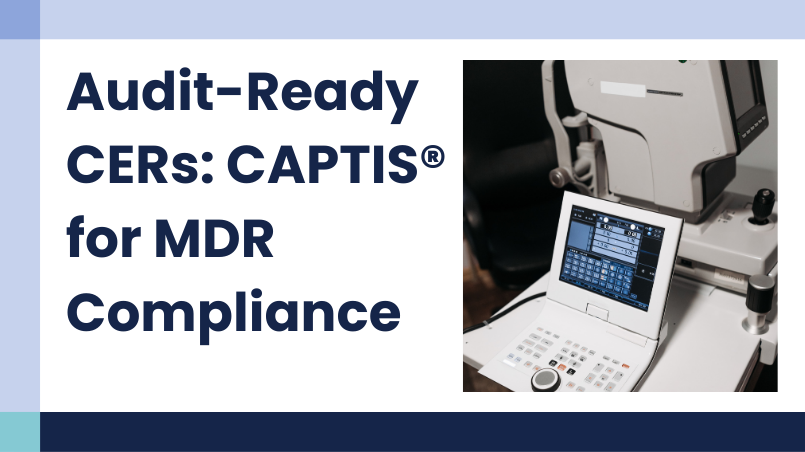AI and Automation in Clinical Evaluation Reports (CERs): From Burden to Breakthrough
Getting MDR Clinical Evaluations Right: What Dental Device Manufacturers Need to Know

26 Aug, 2025
As the EU MDR transition deadlines for legacy devices approach, dental device manufacturers face a heightened burden of clinical evidence. In a recent webinar hosted by Celegence, regulatory experts Priya Ray Chaudhuri and Dr. Manaswitha Boyanagari shared hard-earned lessons from working with dental clients through MDR transitions — and offered clear guidance on how to navigate the clinical evaluation process with confidence and precision.
Here are the key takeaways that regulatory and clinical leaders should prioritize when preparing dental device submissions under MDR.
Why Dental Devices Face Increased Scrutiny
Unlike many other device categories, dental products — particularly implants and restorations — directly interact with human tissue, integrate into bone, and often remain in the body permanently. This raises biological risks — such as inflammation, mechanical failure, or peri-implantitis and Bone loss, making robust clinical evidence not just a regulatory expectation, but a public health necessity.
Certain dental devices have also been reclassified under MDR compared to the earlier MDD framework. Devices previously considered low- to moderate-risk under MDD — for example: Dental implants, Bone replacement materials especially if they have a biological effect or are wholly or mainly absorbed, and certain software tools — are now Class IIb or even Class III. The result? New conformity assessments for all medical devices currently circulating within the European Union Member States, complying with the new regulation and new rules. No grandfathering. Manufacturers must justify safety and performance through new, MDR-aligned clinical evidence and additional requirements like submission of implant cards and summary of safety and clinical performance (SSCP) for implantable and Class III devices.
Clinical Evaluation: A Lifecycle, not a Checkbox
In the webinar, Celegence emphasized the need for a lifecycle approach to clinical evaluations, anchored in four key documents:
- Clinical Evaluation Plan (CEP): Defines the claims, population, data sources, and appraisal methods. It’s the foundation for all subsequent activities.
- Clinical Evaluation Report (CER): Synthesizes clinical data, assesses benefit-risk, and demonstrates alignment with the GSPRs.
- State of the Art (SOTA) Review: Establishes the baseline for comparison and benchmarks claims against current best practices.
- Post-Market Clinical Follow-up (PMCF): A must-have for most Class IIb and III devices, PMCF provides real-world evidence to support long-term safety and performance.
Building a Robust Evidence Strategy
Most manufacturers won’t have the luxury of new clinical trials, especially for legacy devices. That makes literature appraisal the backbone of many MDR submissions.
So, it’s important that manufacturers:
- Be precise in defining intended use and claims. Vague terms like “safe” or “effective” won’t pass. Quantify outcomes where possible — e.g., “98% survival at 7 years” — and ensure they match the indications and target population.
- Design a thorough literature strategy. Use smart filters, search across multiple databases, and include gray literature or implant registries. For dental products, state-of-the-art evidence is particularly critical due to variability in patient response and device longevity.
- Critically appraise sources. Not all literature is created equal. Use a scoring matrix based on relevance, quality, and alignment with the device in question. The MIDDEF 2.7/1 guidance remains a good starting point.
Common Pitfalls — and How to Avoid Them
Manufacturers frequently run into the same issues when preparing MDR-ready CERs:
- Claims not linked to evidence. Every claim should tie back to a data point. If the evidence is lacking, that gap must be addressed through PMCF — not ignored.
- Over-reliance on equivalence. MDR has raised the bar for demonstrating equivalence, especially in terms of material and technical characteristics. A titanium implant is not equivalent to zirconia just because they’re both biocompatible.
- Outdated SOTA reviews. Even legacy devices need updated benchmarking. SOTA evidence should typically be refreshed every 12–24 months.
- PMCF treated as an afterthought. PMCF should be risk-driven and strategic, not just a box-checking exercise. Well-designed clinician surveys, registry tracking, or focused case studies can provide meaningful insights — and address notified body feedback proactively.
What Executive Teams Should Take Away
For dental manufacturers, MDR compliance is more than just a regulatory obligation — it’s a strategic imperative. Clinical evaluations must now go beyond generic templates or legacy data. Success requires structured, defensible, and up-to-date documentation.
Leadership teams should ensure they’re resourcing regulatory functions appropriately — with expert partners, robust data collection systems, and cross-functional input from product development and clinical affairs. A well-executed clinical evaluation strategy not only satisfies regulators, it strengthens a company’s competitive standing in a market where performance, aesthetics, and safety all drive success.
Partner With Celegence
MDR clinical evaluations for dental devices don’t need to be overwhelming. With expert support and proven methodologies, you can deliver CERs, SOTAs, and PMCF strategies that align with regulatory expectations and stand up to Notified Body scrutiny.
Work with our regulatory specialists today and simplify your path to MDR compliance with confidence.
Other Related Articles

08 Dec, 2025

20 Nov, 2025

11 Nov, 2025

03 Oct, 2025

19 Sep, 2025



